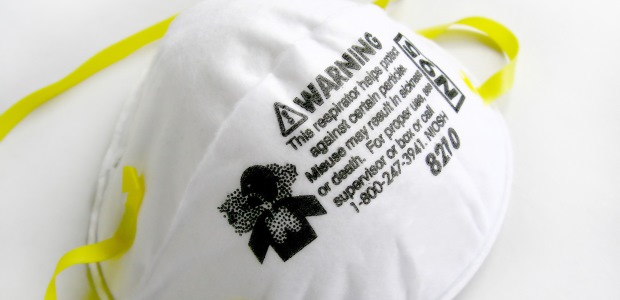Community, Leadership, Experimentation, Diversity, & Education
Pittsburgh Arts, Regional Theatre, New Work, Producing, Copyright, Labor Unions,
New Products, Coping Skills, J-O-Bs...
Theatre industry news, University & School of Drama Announcements, plus occasional course support for
Carnegie Mellon School of Drama Faculty, Staff, Students, and Alumni.
CMU School of Drama
Tuesday, November 17, 2015
Clearing the Air About Disposable Dust Masks
Occupational Health & Safety: The president of Chicago's Trauma Risk Management Research Institute has history with Chernobyl and has invented an "emergency bra," with two cups that can separated and strapped on over the faces of two people to act as air-filtering masks. The RAD EBra model comes with a radiation sensor insert. The manufacturer can also take any bra provided by a customer and perform alterations to turn it into an EBra. This a true bit of trivia; I know because, out of curiosity, I bought one! I've debated about the political correctness of using it for employee respirator training.
Subscribe to:
Post Comments (Atom)

4 comments:
There is a lot of confusion among dust masks and respirators, what they do, and what protection they offer. Working in theater, most of the time we will find ourselves in situations where we don’t need the full protection of a respirator. My understanding is this: dusts masks will stop larger airborne particles whether they are solid (like sawdust) or liquid (like paint). What they won’t stop is volatile fumes, like the ones certain adhesives might give off. In this case, a respirator is required. The health and safety office had University of Toledo did require me to post Appendix D about voluntary respirator use in my scene shop. One thing I didn’t know about the dust masks that I bought was the straps were latex. Not a good thing when one of your students has a latex allergy. When respirators are needed, it is also important that they fit properly, but that’s another story.
Breathing protection has always been a tricky subject in the world of safety gear. I remember at the beginning of the summer there was an issue with the paint charges because they had brought their own personal respirators, which had not gone through the company approval process. Also, in order to use a respirator or receive a new one, you must get a physical to see that you are healthy and fit enough to breathe through the filters. For example, I have a type of asthma, so getting fitted for a respirator is not really a viable option for me. Another big issue with respirators is the fit themselves. Everyone’s face is different and therefore, a respirator that you buy at home depot may not be the most functional piece for that person. In terms of dust masks, I don’t think re-using them should ever be a policy allowed, as sharing a used breathing space is not healthy in any facet.
I really do not understand the focusing of speakers past the mixing of the waves in the crossing paths and the differences in height that can be made to change the overall sound quality. Subwoofers have so much more science behind them than I originally thought and I honestly had never heard about any of these floor or vertical surface rules, but they all seem to hold some kind of weight in their reasoning. Something I have always understood is the loss caused by having audience members closer or farther away than others. I never really thought of a way to combat this other than staggering speakers within the audience, however, then you achieve that no so nice delay from all the cable lengths and data being sent over more distance. To be honest, this is the part of sound I can’t really comprehend and gets me all confused. But I do acknowledge it as a awesome science.
So according to this, most of the protection that we would want from things we encounter in the shop can be provided by the simplest N-Series dust mask. That seems to protect us from Wood Dust, Plastic Dust, and ever aerosolized liquid particles (not including oil based) of paint. The only things it wont protect a user from would be the VOC content in paint, solvents and chemicals like acetone or barge, but mostly, it wont protect from things that aren’t dust.
I think dust masks are great. I think that too many people jump right to a respirator when they see a particle in the air. Ignoring the fact that you simply can’t do that in a commercial setting, it’s also expensive, and the cartridges require replacement, and most people simply aren’t using them correctly.
The dust mask can provide you with the protection you need in many situations. It’s cheap and easy to use. You can buy them anywhere, and they are clearly labeled.
Post a Comment